No, Not All Prediction Methods Are The Same
Share

At the WLPC Conference in Phoenix, 2017 (a great conference for Wi-Fi professionals) our Director of Research – Vladan, gave a talk called ‘Algorithms Behind the Heatmaps: A Deeper Dive’ on the different type of prediction algorithms in our iBwave Wi-Fi planning and design software.
Afterward, we got a few comments from attendees saying they didn’t realize that not all prediction models have the same accuracy, or that even the most complex of prediction models can have some measurement of error.
So in the follow-up to that great talk, and to spread the propagation word further (somehow that seems like a pun?), here’s a simplified breakdown of the different algorithms that Vladan covered, and can be found in our wireless network design software, and what they mean.
COST 231
The COST 231 model is a common direct path model used to simulate the performance of an indoor wireless network.

Example venue types it works best for?
Typically COST 231 is best used in non-complex venues where you know the material penetration loss.
Pros and Cons
| Pros | Cons |
| Fast Calculation | Only direct path is accounted for; no reflected or diffracted paths |
| Good signal accuracy prediction when used with CAD files | Heat map shows unnatural looking ‘shadows’ |
| The more complex the venue, the less accurate the prediction |
What does it look like?
Here is an example of COST 231 in an office environment:
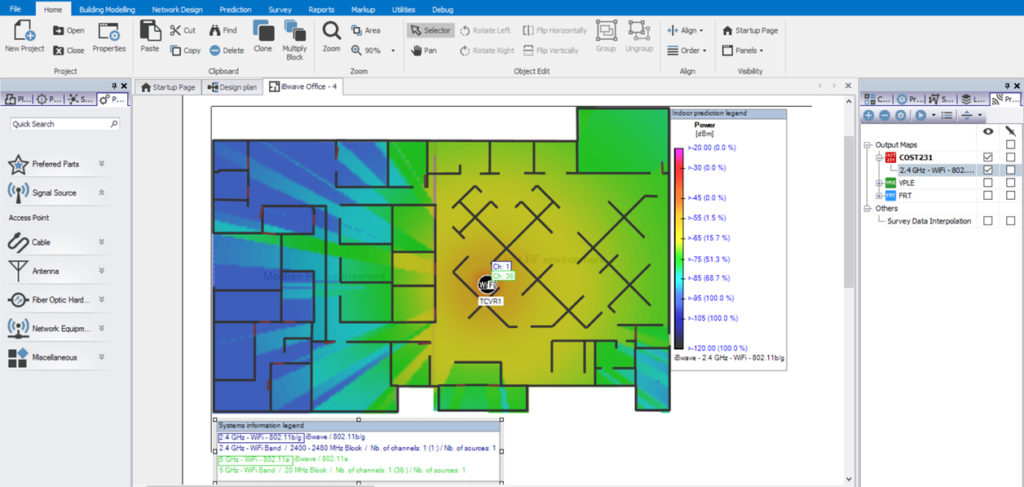
VPLE (VARIABLE PATH LOSS EQUATION)
VPLE is an iBwave patented direct path model that can be used to run prediction with user-defined RF propagation environments (in iBwave this is mostly used on our site survey mobile apps to simulate performance on-site during a survey).

User-defined RF environments can be:
- Semi-open (ex: warehouse)
- Light (ex: shopping center)
- Medium (ex: office)
- Dense (ex: hotel)
- Very dense (ex: hospital)
The benefit of VPLE is that it can be used directly on images and enables fast calculations and network performance simulations.
Example venue types it works best for?
Non-complex venues (cubicle offices, retail stores, etc)
Pros and Cons
| Pros | Cons |
| Very fast calculations | User needs to define RF propagation environments on the floor plan |
| Can be used directly on images | Can have limited accuracy (no walls, no penetration loss) |
| The more complex the venue, the less accurate the result |
What does it look like?
Here is an example of VPLE in an office environment:
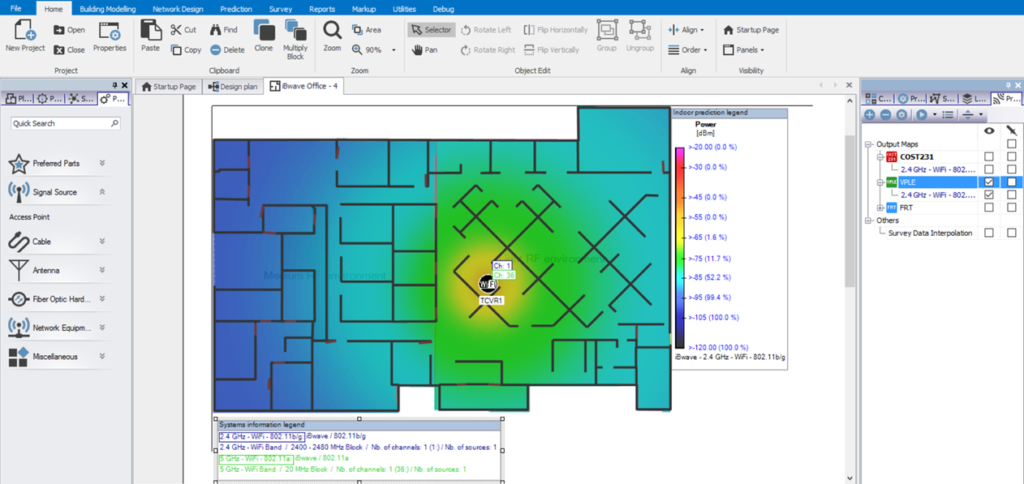
RAY TRACING
Unlike COST 231 and VPLE, Ray Tracing takes into account all signal paths: direct path, reflected path and diffracted paths as shown here:
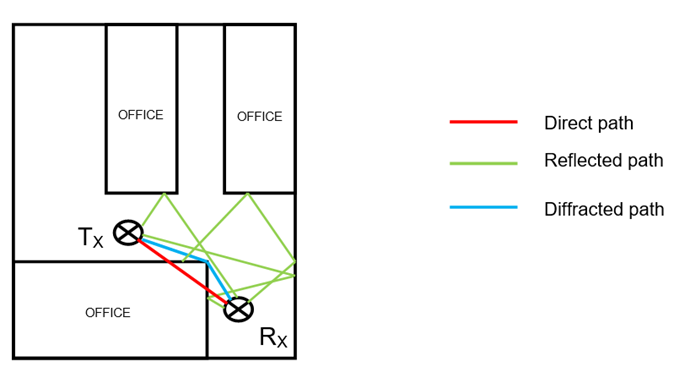
The benefit of Ray Tracing is largely the accuracy you get as a result of it taking into consideration all of the signal paths.
Example venue types it works best for?
Complex venues (stadiums, multi-level subway stations, shopping malls)
Pros and Cons
| Pros | Cons |
| The best accuracy | Computing-intensive |
| Can accurately predict signal in complex 3D venues |
In iBwave software, we have ‘Fast Ray Tracing’ which strikes a balance between the intensive computing time and the accuracy of the prediction.
What does it look like?
Here is Fast Ray Tracing in an office environment:
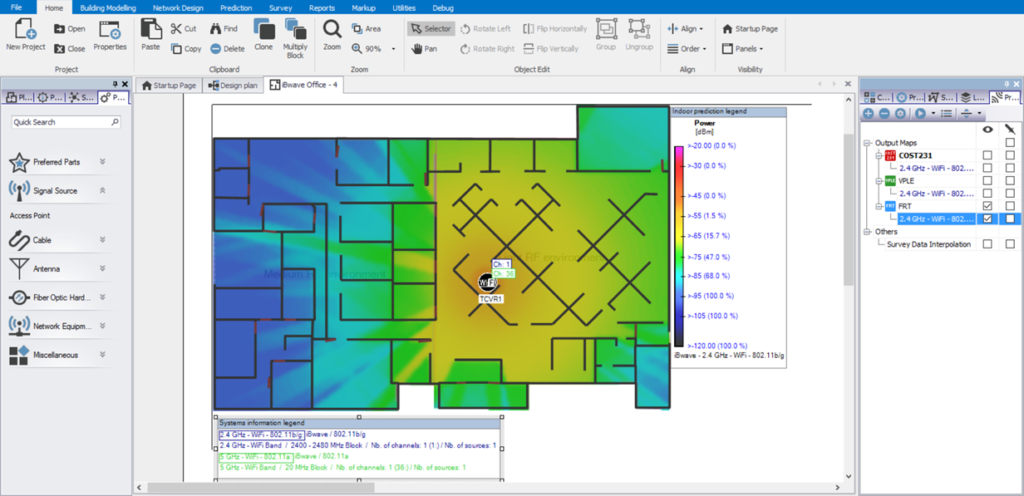
A COMPARISON OF ALL THREE MODELS FOR AN NHL ARENA
You’ve seen the propagation for each of the three methods for an office environment, now let’s take a look at the results for an NHL arena:
COST 231
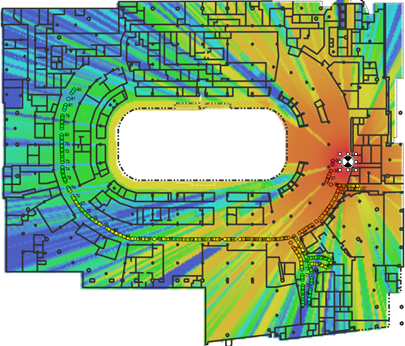
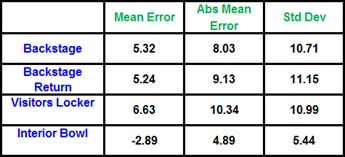
VPLE
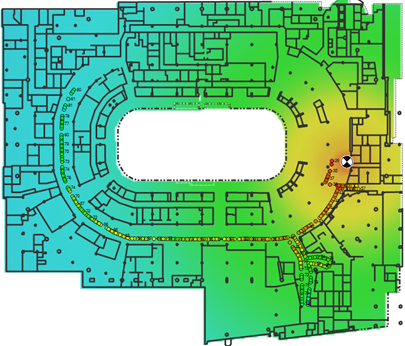
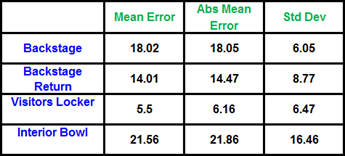
FAST RAY TRACING
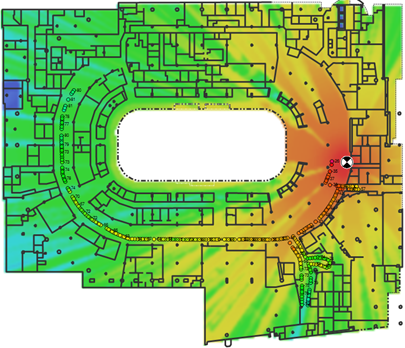
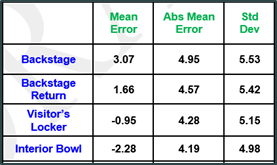
HOW TO USE EACH OF THE METHODS IN iBwave?
Using iBwave Wi-Fi as an example, you can select which propagation method you will use depending on the venue you are designing for.
To select the prediction method, simply go to the ‘Prediction’ panel, select the Properties icon and go under the ‘Specific’ tab to select the Propagation model.
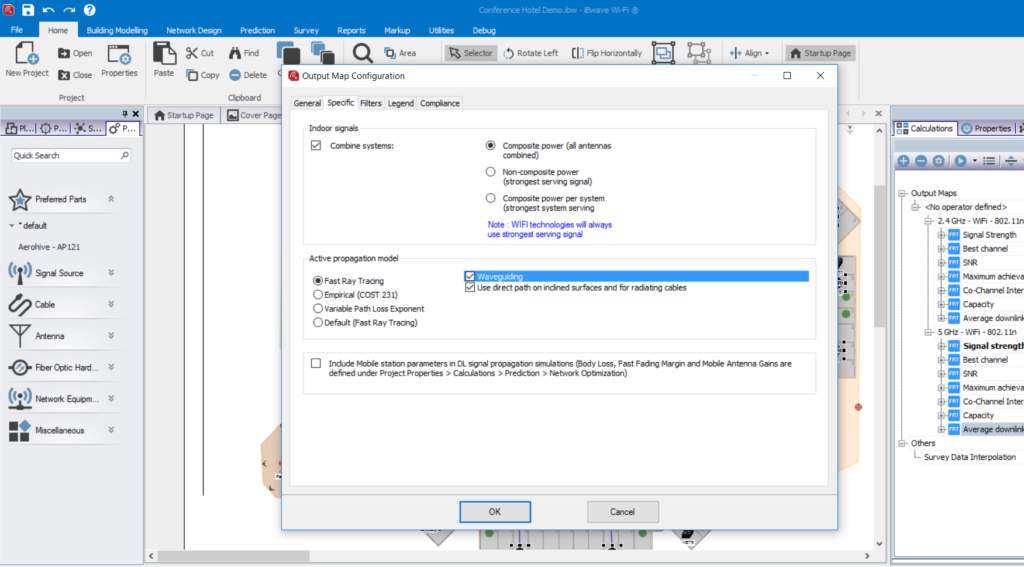
WANT TO LEARN MORE?
Vladan, our Director of Research, recently did a great talk that goes into more depth about each of these methods, including case studies at the recent WLPC show in Phoenix, Arizona.
You can watch Vladan’s presentation, complete with walkthrough of each case study here.
Enjoy
- Cleared for Takeoff: Private Networks in Aviation - January 21, 2025
- A Tour of iBwave Viewer - November 23, 2020
- Introducing Augmented Reality in iBwave Wi-Fi Mobile - September 10, 2020

























